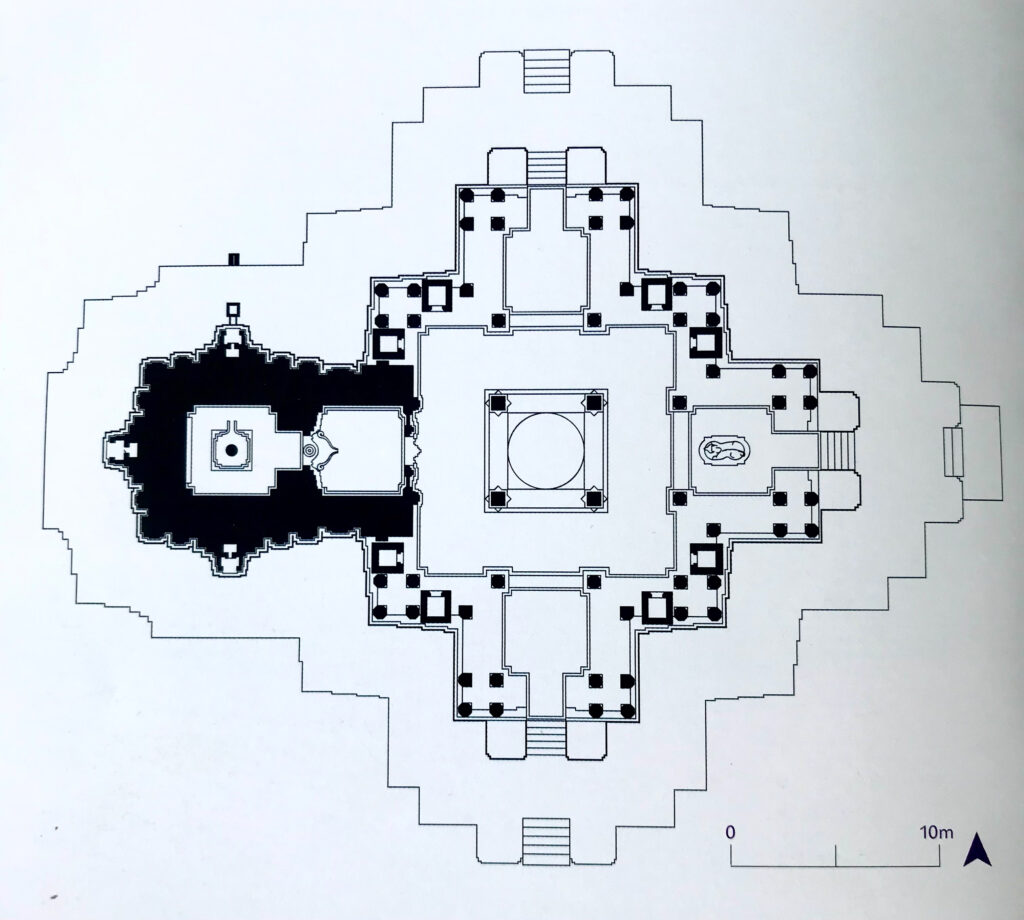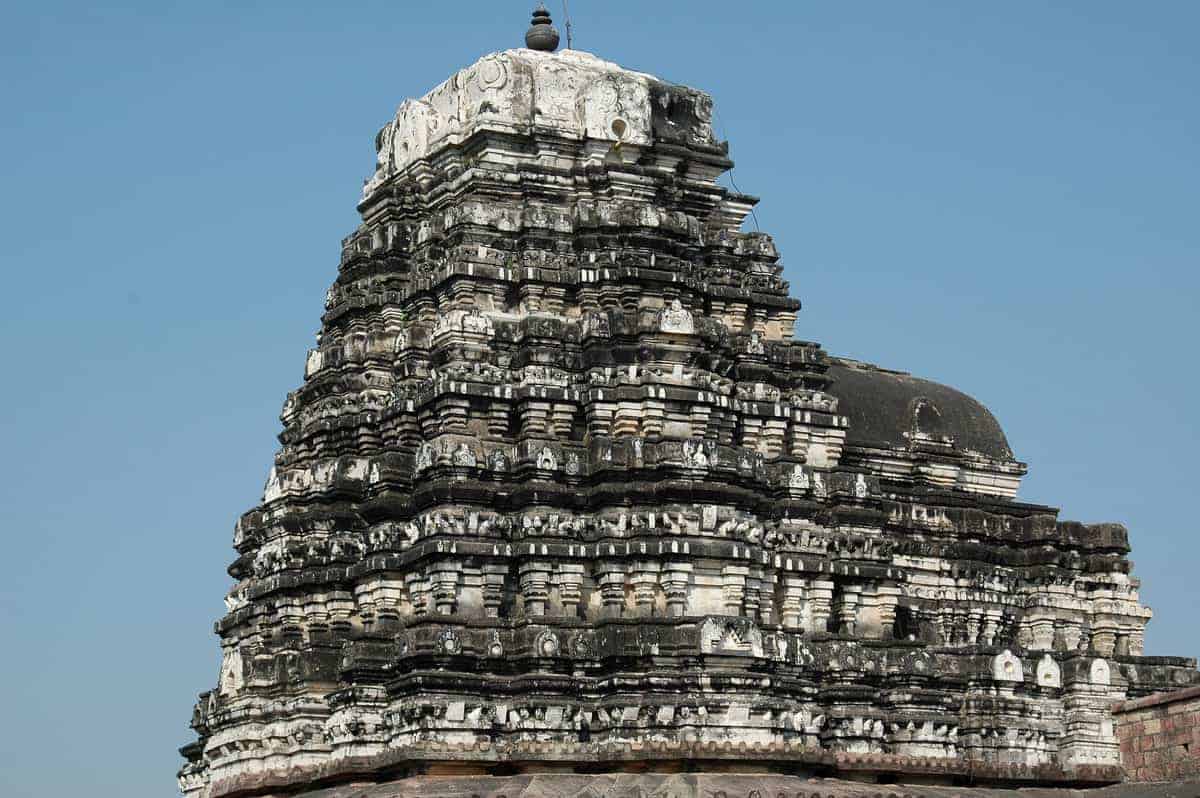
“The Temples at Palampet constitute perhaps the brightest stars in the galaxy of medieval Deccan” – Ghulam Yazdani, Memoirs of Archeological Survey of India, Vol 6 – The Temples at Palampet.

Although Telanganites were caught a little off-guard, it is unsurprising that UNESCO chose the Ramappa Temple as a “World Heritage Site” even as the Qutb Shahi monuments and Warangal Fort remains await the formidable recognition since 2010. The conglomerate of temples in Palampet of which Ramappa temple is a part, has long caught the attention of archeologists and historians if one looks back in time beyond the period of general apathy towards Telangana heritage by the Andhra Pradesh government.
Rediscovered by A. Claude Campbell and Henry Cousens in the 1895-1900 AD time period, it wasn’t until Dr. Ghulam Yazdani, the director of the Department of Archeology under Mir Osman Ali Khan’s administration, took it upon himself that the Palampet temples were brought back from obscurity into the heritage roadmap of the then Hyderabad State. Both Campbell and Cousens observed the Ramappa Temple to be a notch above the comparable 1000-pillar Temple in Hanamkonda from the same era, in terms of artistry and skillmanship. Yazdani elaborates on the architectural magnificence of the temples calling them the brightest stars in the galaxy of medieval Deccan.
His usage of the “star” analogy was not without enough thought as one can see it both literally and figuratively. The platform of the main shrine is a majestic star-shaped unit raised 6 feet high from the ground. Even the areal view of the main shrine resembles that of a distant star. Philip Wagoner, a contemporary historian of the Deccan observes that Yazdani in his adulation is pointing out the fact that it is the most complete Kakatiya temple complex and has the most perfectly preserved monuments from the era.

While most of Yazdani’s career was spent in conserving and documenting the monuments of Bidar and Ajanta and Ellora caves, it is evident he made it a point that Palampet didn’t fall off his radar either. He authored a special issue in the “Memoirs of Archelogical Survey of India” series dedicated to Palampet Temples. He also edited an 11-part voluminous, comprehensive book “Early history of Deccan” (thanks to the relentless push by Nawab Ali Yawar Jung) where he uses the Palampet temples as a pivot, a benchmark to navigate through the Kakatiya era (1163-1323 AD) fine arts – architecture, sculpture, music and dance etc.
In his detailing he finds the architecture of the building as lofty and grand. The high plinth (10 feet), the lofty pillars (15 feet), the spacious hall (41 feet x 41 feet), the ponderous beams and ceiling slabs, and the majestic Sikhara, all bear witness to the high aspiration and breadth of vision of the builder, the builder by
whose name the temple is known rather than the deity inside, which in itself, a rarity. Special attention is given to the pillars inside the temples that are so exquisitely carved there is simply no match anywhere in North Indian or South Indian temple architecture.
Unfavourable location?
Yazdani observes the reason for the Palampet temples to have remained in obscurity was because of its unfavorable location, being far off the beaten track, away from urban landscapes. It maybe worth noting here that Henry Cousens in his report in 1900 AD harshly reminded the Nizam administration on the sorry state of affairs of heritage structures outside the capital city, especially noting the condition of the 1000-pillar temple in Hanamkonda as being in a filthy state and sadly uncared for. A picture of the temple taken by Lala Deen Dayal in 1885 AD stands as a testimony that shows encroachment and overgrown vegetation around the ruins. He called for immediate action to cordon off the temple reserving certain surrounding area around as a buffer zone, a factor that would find itself as a criterion for UNESCO much later. It appears this report had been instrumental in the setting up of an “Archaeology Department” in 1914 and taking up conservation work of heritage structures as a virtue of modern civilization.

Ironically, being “far off the beaten track” may have worked in favour of the Palampet temples in the long run as it prevented vandalism and encroachments although not without its share of incidents. Yazdani recounts one such incident where the district officials removed two of the statues of dancing girls, a major attraction of the temple, that are of life-size, worked in highly polished black basalt and cut with great precision and accuracy. They wanted to decorate their homes with the statues but the state intervened in time to prevent this act of vandalism.

Growing up in Warangal in the 1990s, I recollect Ramappa and Pakhal were the two favorite school picnic destinations, both being at a distance of around 60 km from the city. We students were lucky to witness the floating brick show that was put up in those days. These light spongy bricks were used in the gopuram i.e. the spire of the temple deliberately avoiding using stone to reduce the weight over the building. I remember sharing thoughts with my school mates on how other-worldly the Ramappa temple looked and how we were scared to enter as it resembled an alien spaceship ready to takeoff any minute, especially with it’s multi-layered star-shaped platform that looked as a parking gear and its chajjas with intricately sculpted cornices as flight wings.
Yazdani also brings into focus the great lakes of Ramappa, Pakhal and Lakhnaram of Warangal subah calling them magnificent tanks with their titanic dykes and sluicegates. In his tribute offering to Kakatiya era irrigation techniques he felt these tanks provided lessons to even modern engineers. The Lakhnaram tank, now a budding tourist destination, is the largest water reservoir to be found within the dominions of the Nizam.

The then Irrigation Department used to camp within the premises of the temple complex when they had to undertake lake bund repairs and in the process also performed some conservation works to temple structures. Yazdani recounts one such effort in the 1920s on the temple at the eastern extremity of the bund that prevented the crumbling structure from a complete collapse.
The subsidiary shrines and temples were also not neglected as Yazdani saw the entire conglomerate as a mini-galaxy in it’s own. His documentation gives substantial description on the make and composition of the subsidiary shrines and temples as much as his detailing on the main temple.
Moses Tulasi is a Hyderabad-based documentary filmmaker who occasionally writes on History and Culture.

